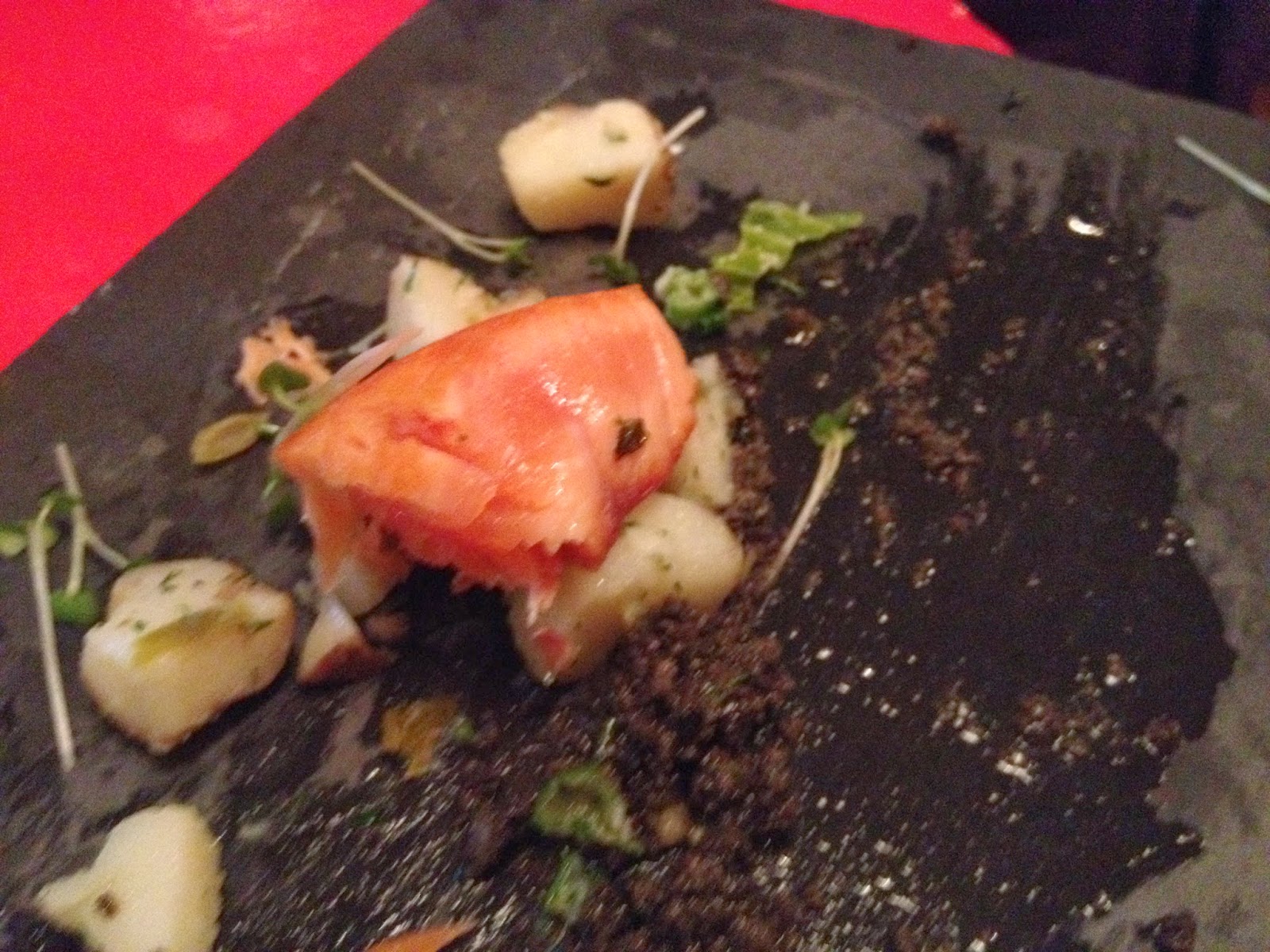I recently sent samples of 5 Sarpo varieties, grown here in N. Wales to RC's head chef Gelf Alderson. Here is his careful assessment.
Sarpo potatoes – an
evaluation at River Cottage HQ
For all varieties I boiled, mashed and chipped, the stand
out two varieties were the Shona and the Axonas, these two would fit most needs
of a commercial operation and would be the varieties I would be most interested
in growing.
Sarpo Shona
·
Made good mash, if being ultra-critical had a
slightly powdery finish on it, but still an excellent result, smooth, fluffy
and a good potato flavour
·
Amazing chips, one of the best chipping potatoes
I have used, blew away any organic variety I can currently source
·
Boiled and eaten cold they were perfectly
acceptable but were quite powdery and would have to have a good dressing or
mayonnaise to make them usable cold.
Blue Danube
·
Made a nice smooth mash, really nice texture
although a little weak on flavour
·
Made ok chips, did really crisp up that well,
not as good as the Shona or Axona
·
Not good cold, had a strange texture and lacked
flavour
Sarpo Una
·
Did not make good mash, very sticky and over
worked almost instantly
·
Ok chips, I actually sautéed this variety as
well and it worked slightly better, better than the average organic potato
·
Was ok cold a little watery and slightly lacking
in flavour
Sarpo ‘Axona’
·
Made the best mash of the bunch, light, fluffy,
really good flavour, a pleasure to work with
·
Really good chips hard to fault, light, crispy
didn’t take on too much oil, really good quality
·
Nice cold could be put to many uses without too
much needed to help it out, retained it’s flavour and maintained a good texture.
Sarpo ‘Kifli’
·
Did not make good mash, very wet, gloopy and
tasteless
·
Not good chips, dry matter content way too low
could not get them to crisp at all
·
Best use for them were cold but were not as good
as the Axona or Shona. ( Although my thought may not be that positive on this
variety they are around the standard of about 50% of the organic potatoes on
the market currently)
I hope this helps in the development of these varieties for
you and I would be interested in getting some of the Shonas and Axonas grown
for me, and am starting to talk to some local farmers to see if they are
interested. Although I have levelled criticism at some of varieties the Danube,
Shona and Axona are way above the standard of main crop organic potatoes, so I
look forward to spreading the word.
Gelf Alderson.
Head Chef, River Cottage HQ , January 2014
Gelf did not test them as roasties but others have found Blue Danube to be 'The best roast potato- ever'.
Sarpo Una is really an early potato and eats best when freshly harvested 'in the green' from the field.
Sarpo Kifli is a summer potato yielding very good-tasting potatoes when freshly harvested from late July through until October. It is ideal for a box scheme.



















